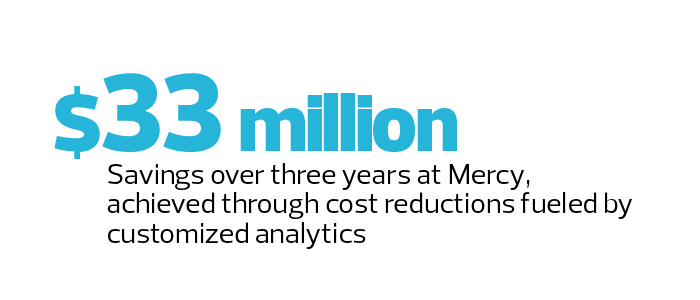Customized Data Analytics Offer a Healthcare Information Revelation
With a profusion of data now available from electronic health records, enterprise resource planning systems and other sources, healthcare has an abundance of information that can lower costs and improve patient care. However, taking action on that information has proved a stumbling block for some providers.
To tap into the expanding volumes and variety of data, organizations need a solid data infrastructure, as well as proven analytics tools. Even with such resources on hand, however, providers of all sizes still struggle to benefit from the wealth of available information.
Until they do, their data won’t be harnessed to its full potential. When organizations can unleash the power of analytics to describe, predict and prevent clinical events, they’ll discover many chances to reduce costs while improving the health and wellness of patients.
SIGN UP: Get more news from the HealthTech newsletter in your inbox every two weeks
How Mercy Modernized the Data Warehouse
The foundation of any organization’s analytics strategy comprises two pillars: data integration and information organization. In analytics, success depends largely on the ability to bring together data from multiple systems, the fundamental job of the data warehouse.
Large organizations may have multipurpose data warehouses or warehouses supplied by vendors. Both typically organize data by source, as opposed to use. At St. Louis-based Mercy, which boasts 33 acute-care hospitals, 11 specialty hospitals and more than 700 physician practices and outpatient facilities, we’ve observed that our enterprise data warehouse is more effective when organized around the unique needs of the service line using the analytics.
By integrating data and organizing longitudinal records into service line or subject area data marts, managers get a specific, structured view of healthcare operations for a given specialty or area. The data takes on meaning relevant to the audience consuming it, and is far more useful for solving unique clinical and business problems.
Predictive, Not Descriptive Analytics Are Key
Once data has been captured, pulled into an enterprise data warehouse and organized into service line data marts, the multistage process of mining and analyzing begins. First, there’s a discovery step where users evaluate information for quality. Once quality is established, data scientists analyze and interpret the information.
With the growth of machine learning and predictive analytics, employing experts in advanced analytics techniques has evolved from a luxury to a necessity. For organizations that may not have the on-staff expertise to turn data into cost- and life-saving information, outsourcing work or finding external partners to extract knowledge from the data and gain insights that wouldn’t otherwise be possible might be necessary.

As for where to focus your data efforts, don’t get caught up in descriptive analytics. Advancing your strategy to put predictive and prescriptive analytics into practice will ensure better success and help to speed response to patient needs. By focusing on capabilities that predict what could happen and suggesting preventive actions, you create tomorrow’s best practices today.
Analytics have the greatest impact on patient care at the fingertips of care-givers; to that end, organizations must make data readily available and easy to understand. Embed real-time analytics into your clinical and business workflow to increase productivity and speed reliable decisions.
Custom Dashboards Offer Real Savings at Mercy
At Mercy, we use analytics to create a results-driven solution customized for each service line. With a governance approach, each service line leader defines key performance indicators, from summary level to detail, including data points that require additional discovery. Data scientists analyze the information for the greatest opportunities and display the data using custom dashboards integrated with the workflow. Using this method, end users can approach the data with a question and receive an immediate answer that is evidence-based and intuitive.
For instance, by creating a set of custom perioperative dashboards to consolidate large sets of diverse clinical, operational and financial data, we have found tremendous success addressing the high cost of surgical supplies, our second leading driver of spending behind labor.
Prior to the dashboards, there were varying opinions as to the best practice, price and product for a given procedure. Significant variations existed in the cost per surgical case across Mercy’s 30-plus surgery departments.
The dashboards deliver key metrics on performance, including cost per case, on-time starts, operating room turnover times and block utilization. With visibility to compare surgical procedure costs and outcome data among all Mercy hospital locations and surgeons, we now can easily identify best practices, decrease procedure costs and enhance the quality of Mercy’s surgical practices.
With data driving our decisions, Mercy reduced costs by $33 million over three years, eliminated or minimized the use of certain surgical products, reduced variation and established best practices across Mercy’s perioperative departments, all while ensuring quality postoperative outcomes for patients.
Few tools are truly plug-and-play. But by taking time to customize analytics strategies and make data easily available to those who need it most, healthcare organizations can take significant strides to cut costs and improve patient care.








